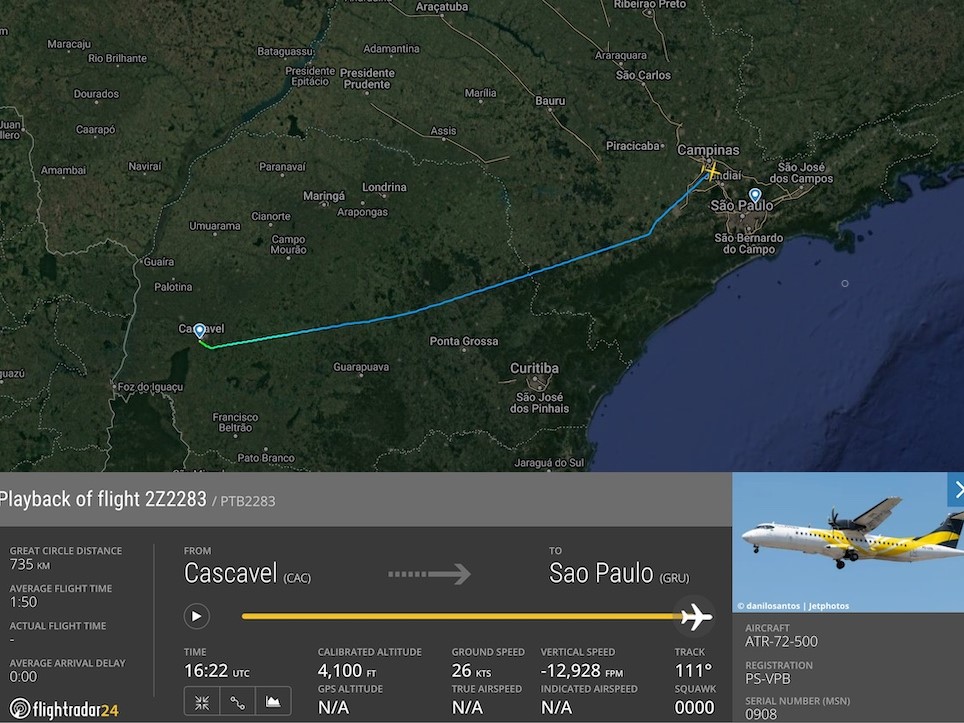The ATR 72 Aircraft

The ATR 72 is a twin-engine turboprop regional airliner manufactured by ATR, a joint venture between Airbus and Leonardo. It’s a popular choice for airlines seeking a fuel-efficient and versatile aircraft for regional routes, commuter services, and cargo operations.
Design and Specifications
The ATR 72 is a high-wing aircraft with a T-tail configuration, meaning the horizontal stabilizer is mounted at the top of the vertical stabilizer. This design offers several advantages, including improved ground clearance and reduced turbulence for passengers. The aircraft is known for its robust construction and ability to operate on short, unpaved runways. The ATR 72’s design emphasizes fuel efficiency and low operating costs, making it attractive for regional airlines.
Here are some key specifications of the ATR 72:
- Length: 27.17 meters
- Wingspan: 27.05 meters
- Height: 8.27 meters
- Maximum takeoff weight: 23,000 kg
- Cruising speed: 510 km/h
- Range: 1,500 km
- Passenger capacity: 70-78 (depending on configuration)
Safety Features
The ATR 72 incorporates various safety features designed to enhance passenger and crew safety. These include:
- Advanced avionics systems: The aircraft is equipped with modern avionics systems, including a glass cockpit with digital displays, providing pilots with comprehensive flight information and navigation data.
- Enhanced ground proximity warning system (GPWS): This system alerts pilots to potential ground collisions, providing crucial warnings in challenging terrain or low-visibility conditions.
- Redundant systems: The ATR 72 features redundant systems for critical components, ensuring continued operation even if one system fails. This redundancy enhances safety and reliability.
- Strong safety record: The ATR 72 has a strong safety record, with a low accident rate compared to other aircraft types. The aircraft’s design and safety features have contributed to its overall safety performance.
History of the ATR 72
The ATR 72 is a successor to the ATR 42, a smaller turboprop aircraft introduced in 1988. The ATR 72 first entered service in 1990, and it quickly gained popularity among regional airlines worldwide. The aircraft has undergone several upgrades and improvements over the years, including the introduction of new engines, avionics systems, and cabin configurations.
Operational History and Safety Record
The ATR 72 has been a popular choice for regional airlines worldwide, with a fleet of over 500 aircraft in service. It has been used for a variety of purposes, including commuter services, cargo operations, and air ambulance flights. The ATR 72’s versatility and fuel efficiency have made it a valuable asset for airlines operating in challenging environments or with limited infrastructure.
The ATR 72 has a relatively good safety record. However, it has been involved in several accidents over the years, some of which have been attributed to pilot error, mechanical failure, or weather conditions. These accidents have led to improvements in safety protocols and training for pilots and maintenance personnel.
Notable ATR 72 Accidents and Incidents: Atr 72 Crash

The ATR 72, a popular regional turboprop aircraft, has a generally good safety record. However, like any aircraft, it has been involved in a number of accidents and incidents over the years. Some of these events have been particularly notable due to the number of fatalities or the circumstances surrounding the incident.
Notable ATR 72 Accidents, Atr 72 crash
The following are some of the most significant ATR 72 accidents:
- 2014 TransAsia Airways Flight 235
– Date: February 4, 2014
– Location: Taiwan
– Cause: Pilot error and a malfunctioning engine. The pilot lost control of the aircraft after an engine failure, causing it to crash into a river.
– Investigation Findings: The investigation revealed that the pilot had not followed proper procedures for dealing with an engine failure. The aircraft’s engine was also found to have a design flaw that contributed to the incident.
– Safety Recommendations: The investigation led to recommendations for improved pilot training and changes to the aircraft’s engine design. - 2016 Germanwings Flight 9525
– Date: March 24, 2016
– Location: French Alps
– Cause: Deliberate act by the co-pilot, who locked the captain out of the cockpit and intentionally crashed the aircraft.
– Investigation Findings: The investigation revealed that the co-pilot had a history of mental health issues and had been suffering from depression.
– Safety Recommendations: The incident led to a number of safety recommendations, including changes to cockpit security procedures and improved mental health screening for pilots. - 2018 Yeti Airlines Flight 691
– Date: March 12, 2018
– Location: Nepal
– Cause: Pilot error and a malfunctioning weather radar. The pilot lost control of the aircraft during a difficult landing in bad weather conditions.
– Investigation Findings: The investigation revealed that the pilot had not followed proper procedures for landing in such conditions. The aircraft’s weather radar was also found to be malfunctioning.
– Safety Recommendations: The incident led to recommendations for improved pilot training and maintenance procedures for aircraft weather radar systems.
Safety and Maintenance Considerations

The ATR 72, like any aircraft, requires meticulous attention to safety and maintenance to ensure its continued airworthiness and passenger safety. Regular maintenance and inspections are crucial for identifying and addressing potential issues before they escalate into serious incidents. Furthermore, pilot training and experience play a significant role in mitigating risks associated with ATR 72 operations.
Importance of Regular Maintenance and Inspections
Regular maintenance and inspections are critical for ensuring the continued airworthiness of the ATR 72. These activities help to identify and address potential issues before they escalate into serious incidents. The ATR 72 is subject to a rigorous maintenance schedule, which includes:
- Daily Inspections: These inspections are performed by maintenance personnel before each flight. They cover a wide range of checks, including the aircraft’s exterior, engines, and flight control systems.
- Scheduled Maintenance: The ATR 72 undergoes scheduled maintenance at regular intervals, such as every 50 or 100 flight hours. These maintenance events involve more in-depth inspections and repairs.
- Heavy Maintenance: The ATR 72 also undergoes heavy maintenance checks at longer intervals, typically every 1,000 or 2,000 flight hours. These checks involve a comprehensive inspection of the aircraft, including its structure, engines, and systems.
In addition to these scheduled maintenance activities, the ATR 72 may also undergo unscheduled maintenance if any issues are detected during inspections or flights. These unscheduled maintenance events are essential for addressing any potential safety concerns.
Role of Pilot Training and Experience
Pilot training and experience are crucial for mitigating risks associated with ATR 72 operations. The ATR 72 is a relatively complex aircraft, and pilots require extensive training to operate it safely. The training program for ATR 72 pilots includes:
- Ground School: Pilots receive classroom instruction on the ATR 72’s systems, procedures, and regulations.
- Flight Simulator Training: Pilots undergo extensive training in flight simulators to develop their skills and familiarize themselves with the aircraft’s handling characteristics.
- Line Training: Pilots receive flight training with an experienced instructor in the actual ATR 72 aircraft. This training focuses on real-world scenarios and helps pilots develop their decision-making skills.
Experience is also crucial for ATR 72 pilots. As pilots gain experience, they develop a better understanding of the aircraft’s limitations and how to operate it safely in various conditions. Experienced pilots are also better able to anticipate and respond to emergencies.
Safety Record of the ATR 72
The ATR 72 has a generally good safety record, comparable to other aircraft types in its class. However, it is important to note that the ATR 72 has been involved in several notable accidents and incidents, some of which have been attributed to factors such as pilot error, maintenance issues, and weather conditions.
The ATR 72’s safety record is comparable to other aircraft types in its class.
The ATR 72 is a popular aircraft for regional airlines, and it is used to operate a wide range of routes, including short-haul, regional, and commuter flights. While the ATR 72 has been involved in several accidents, the aircraft’s safety record is comparable to other aircraft types in its class.
The ATR 72 crash, a tragic event that resulted in the loss of numerous lives, serves as a stark reminder of the importance of aviation safety. While the incident itself is a matter of technical investigation, its impact on public perception can be gauged through various sources, such as the rasmussen presidential poll , which provides insights into the concerns and opinions of American voters.
The poll’s findings can shed light on how such events influence public trust in air travel and government regulations, potentially prompting changes in safety protocols and policies.
The ATR 72 crash, a tragic event with far-reaching consequences, underscores the importance of meticulous safety protocols in aviation. The scrutiny surrounding such incidents often mirrors the intense public discourse surrounding issues like presidential debates , where the nation grapples with complex issues and seeks clear answers.
Similarly, investigations into aviation accidents aim to establish accountability and prevent future tragedies, highlighting the need for transparency and thorough analysis in critical situations.
